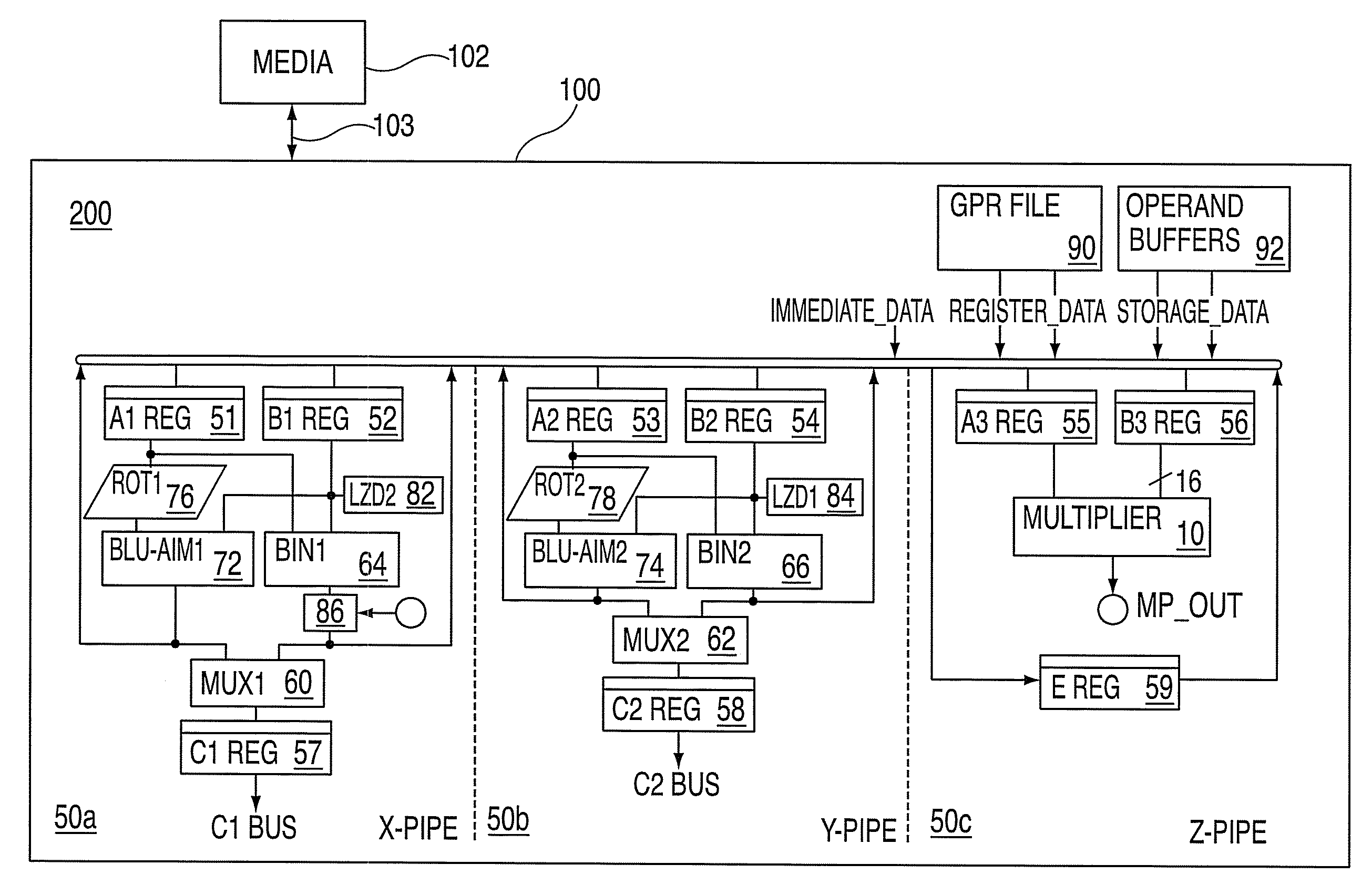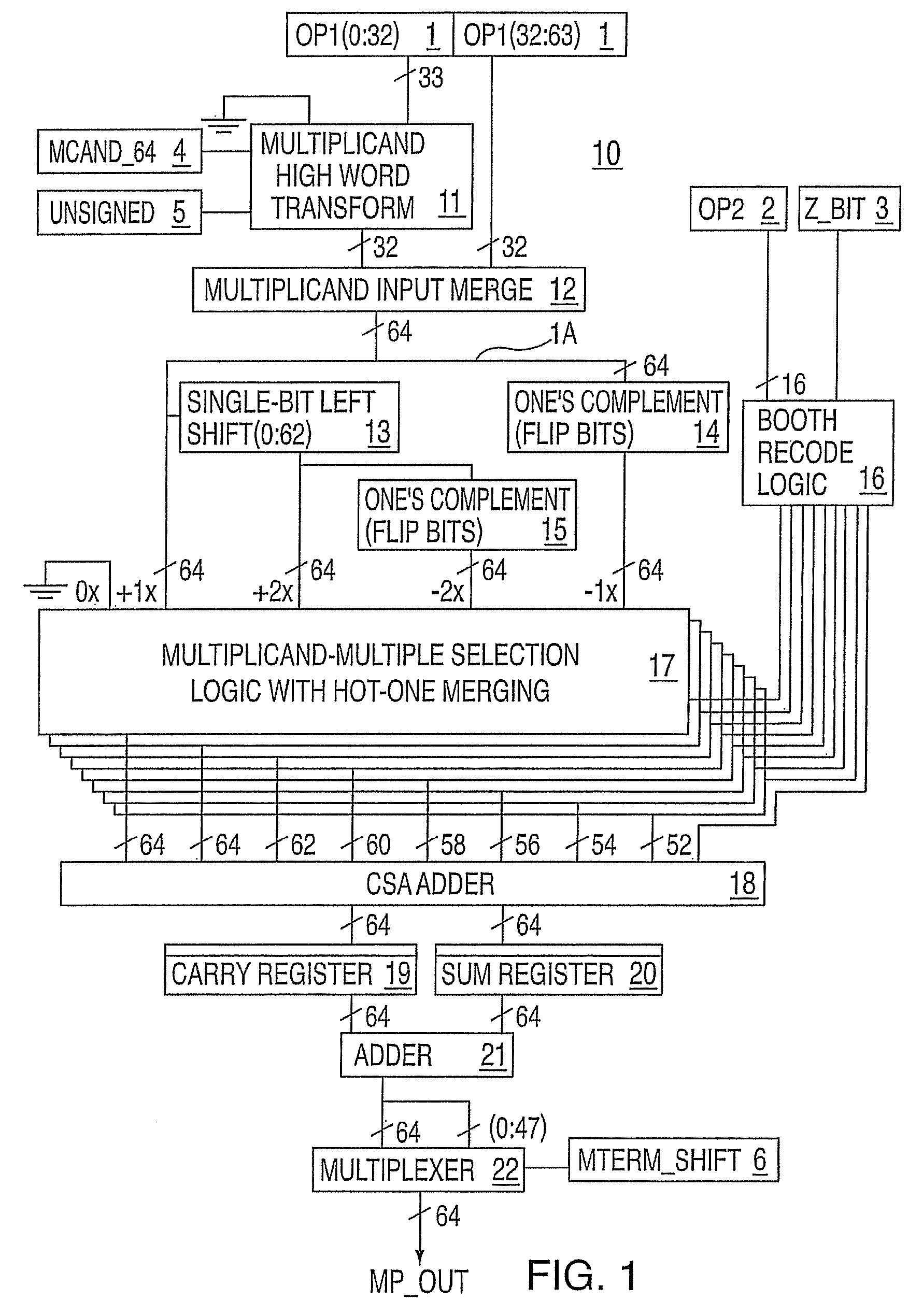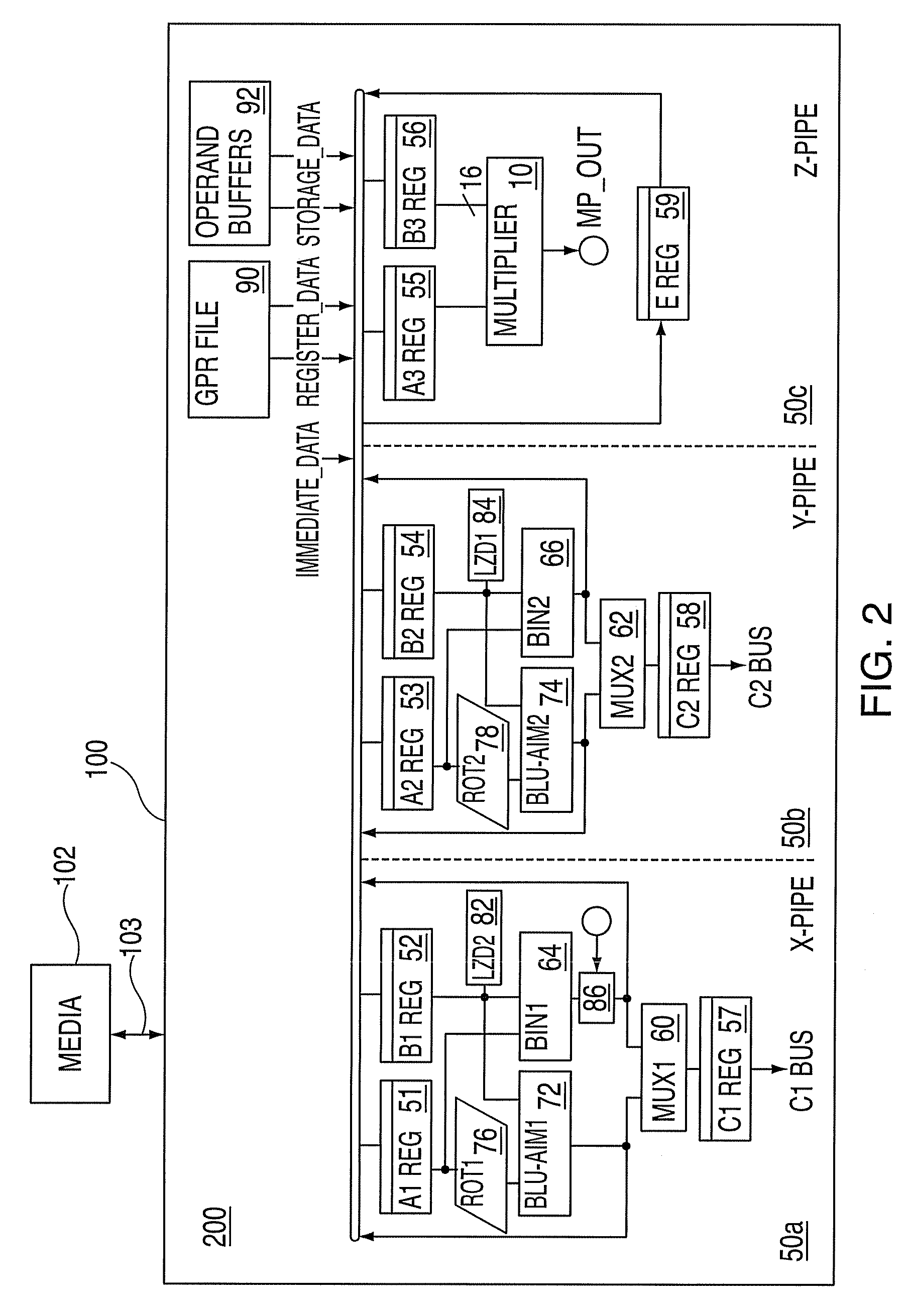Modular binary multiplier for signed and unsigned operands of variable widths
a module-based multiplier and operand technology, applied in the field of module-based multipliers for signed and unsigned operands of variable width, can solve the problems of increasing the chip area dedicated to multiplication functions, unnecessary addition of result sign processing, and reducing cpi
- Summary
- Abstract
- Description
- Claims
- Application Information
AI Technical Summary
Benefits of technology
Problems solved by technology
Method used
Image
Examples
Embodiment Construction
[0022]Disclosed herein in one or more exemplary embodiments is a method and system architecture for multiplying binary numbers of varying lengths, either signed or unsigned operands with lossy or lossless results, through the use of a specialized super-Booth multiplier whose modularity makes it compatible for use with a variety of supporting Arithmetic Logic Unit (ALU) hardware. The modularity of the architecture is prompted by the need for a smaller multiplier that is still be able to handle larger operands with efficiency. Therefore the architecture represents a compact multiplier that is designed to work with arithmetic and logical functions and resources that may be found in most processor environments. It includes a less than full data-width sized input for a multiplier operand and may include a less than full, if not full, data-width input for a multiplicand. The architecture also includes an overlap bit signal that is instrumental in tying subgroups of multiplication operatio...
PUM
 Login to View More
Login to View More Abstract
Description
Claims
Application Information
 Login to View More
Login to View More - R&D
- Intellectual Property
- Life Sciences
- Materials
- Tech Scout
- Unparalleled Data Quality
- Higher Quality Content
- 60% Fewer Hallucinations
Browse by: Latest US Patents, China's latest patents, Technical Efficacy Thesaurus, Application Domain, Technology Topic, Popular Technical Reports.
© 2025 PatSnap. All rights reserved.Legal|Privacy policy|Modern Slavery Act Transparency Statement|Sitemap|About US| Contact US: help@patsnap.com



